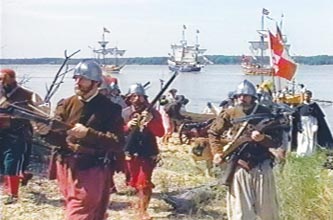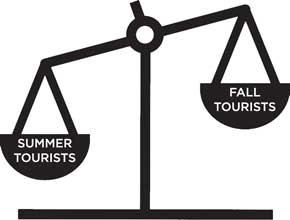Where Do We Go From Here?
Remember the story of the dog that chased the bus? The “good news” was that the dog was chasing the bus. The “bad news” was that he caught the bus. We were intent at searching for tourism sites that had the potential of improving the third leg of our economy – the tourism sector. But what we discovered was much larger than a bus. We discovered that America did not start with the English at Jamestown. We also discovered that America did not start with independent actions by France, Spain, and England. It started in a series of interrelated acts . . . like a movie . . . a fascinating movie. The French had made a move to settle on Spanish-clamed La Florida. And La Florida, in Spain’s eyes, included the territory covered by the entire 48 lower states. Yes, we were in shock at this discovery. The first major European settlement was not St. Augustine or Jamestown. It was Santa Elena on Port Royal Sound . . . located on a remote part of Parris Island. Furthermore, Santa Elena was the first colonial capital of La Florida. WOW! That wasn’t just news to us. And it was certainly more important than finding a potential tourism asset. In our eyes, we had participated in discovering where America really began . . . and how it began.
How should this new story of lost history be shared? That was the real question. We knew from our collective experience that we needed a team of seasoned and experienced people to help us develop a plan. We also needed people on this team that had vision. This opportunity was not just a Beaufort County opportunity. And it wasn’t just a South Carolina opportunity. It was an American story. In fact, it was an international story.
It didn’t take us long. Last fall Stu Rodman, Dr. Larry Rowland, and I contacted a very solid group of “thinkers and doers.” They included Senator Tom Davis, P.J. Browning (Publisher of the Charleston Post and Courier), Dean Moss, Dick Stewart, Gary Kubic, and retired Lt. General, Garry Parks. With input from this group we reached out to the Department of Interior’s top Federal archaeologist, Dr. Stanley Bond. Dr. Bond, who is a native of Beaufort, informed us that the Federal government had just set a policy of uncovering all major Hispanic archaeological sites. Their goal is to help the 54 million American Hispanics understand that they will discover some of their own heritage by visiting these sites. The dominoes kept falling. It was almost as if someone was guiding us to an answer. To our surprise Dr. Bond informed us that the Secretary of Interior had signed an agreement where Spain would assist in supporting the discovery and interpretation of all Hispanic archaeological sites. Initially, the Santa Elena project looked somewhat unmanageable. Now it looked possible.
With input from this group, we outlined what we needed to do. First, we had to organize a not-for-profit Santa Elena Foundation. It would be our leadership organization. We would also need a non-profit status to work with the Marine Corps. Second, The Santa Elena Foundation would have to recruit a few experts that we could call on at any time for advice. They would be the Foundation’s Advisory Board. Third, we needed to file for a permit to reopen archaeology on the Parris Island site.
And finally, we needed an “interpretation” center that would tell the real story of how America was founded. And it would certainly include the story of how the Spanish were the first major settlers of what is now America.
Today, the Santa Elena Foundation exists and is actively working to tell the “lost” story of how America was first settled. The Board of Directors includes Dr. Larry Rowland, Dick Stewart, Stu Rodman, P.J. Browning, retired Marine General Garry Parks and myself. Our Advisory board includes Dr. Eugene Lyon, Dr. Paul Hoffman, Dr. Chester DePratter, Dean Moss, Maggie Bertin (retired Smithsonian senior officer), Dr. Mary Socci (archaeologist at Palmetto Bluffs) and Dr. William Kelso. Dr. Kelso needs special note.
Some have asked us if we intend to showcase Santa Elena at the expense of Historic Jamestowne or St. Augustine. The answer is absolutely NO! We intend to show the entire timeline of how America was first settled. To make that happen Dr. William Kelso has agreed to be on the Santa Elena Foundation Advisory Board. He is the Executive Director and senior archaeologist of Historic Jamestowne. Furthermore, Dr. Eugene Lyon is also on our Advisory Board. Gene was the former Executive Director of the St. Augustine Foundation.
A large opportunity is only exciting if it can be led by people who are experienced at execution. The Santa Elena Foundation Board and Advisory Board are made up of individuals who have a reputation of “making it happen.” We have the leadership. Now we need to develop a plan that will draw strong community support. And that plan must include reopening the archaeological site on Parris Island without impeding the Marine’s mission.








